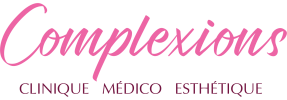Ultimate Medical Aesthetics Guide: In-Depth Look – Navigating Medical Aesthetic Regulations
Introduction
The field of medical aesthetics is one of the fastest-growing sectors in healthcare, offering a wide range of non-surgical procedures designed to enhance appearance and boost confidence. However, with this growth comes the need for stringent regulations to ensure patient safety and the quality of services provided. Navigating the regulatory landscape of medical aesthetics can be complex, but understanding these regulations is crucial for both practitioners and patients. This comprehensive guide takes an in-depth look at the regulations governing medical aesthetics, highlighting their importance, the challenges they present, and how to ensure compliance.
The Importance of Navigating Medical Aesthetic Regulations
Ensuring Patient Safety
Patient safety is the cornerstone of any medical field, and medical aesthetics is no exception. Regulations are in place to ensure that procedures are performed safely, using approved methods and products. These regulations help prevent complications such as infections, allergic reactions, and adverse outcomes, which can arise from improper techniques, unsterile environments, or the use of unapproved substances.
Standardizing Practices
Regulations also play a crucial role in standardizing practices across the industry. By setting clear guidelines for training, certification, and the execution of procedures, regulations ensure that all practitioners meet a minimum level of competency. This standardization helps to reduce variability in the quality of care and ensures that patients receive consistent and reliable services, regardless of where they seek treatment.
Protecting Patients from Fraud and Misrepresentation
The medical aesthetics industry is unfortunately rife with cases of fraud, misrepresentation, and unqualified practitioners offering services beyond their expertise. Regulations help protect patients by ensuring that only licensed and properly trained professionals can perform certain procedures. This reduces the risk of patients falling victim to unscrupulous individuals who may offer substandard or even dangerous treatments.
Key Regulatory Bodies when Navigating Medical Aesthetic Regulations
United States: FDA and State Medical Boards
In the United States, the Food and Drug Administration (FDA) and state medical boards are the primary regulatory bodies overseeing medical aesthetics.
FDA: The FDA regulates the approval and use of medical devices, drugs, and cosmetics, including those used in aesthetic procedures. This includes dermal fillers, Botox, lasers, and other equipment. The FDA ensures that these products are safe for use and are marketed truthfully without misleading claims.
State Medical Boards: Each state has its own medical board responsible for licensing healthcare providers, including those who perform aesthetic procedures. These boards establish the qualifications required to practice medical aesthetics, oversee the conduct of practitioners, and enforce disciplinary actions when necessary.
European Union: CE Marking and National Regulations
In the European Union, medical aesthetics are regulated at both the EU and national levels.
CE Marking: Products used in medical aesthetics, such as devices and injectable materials, must carry the CE mark, indicating that they comply with EU safety, health, and environmental requirements. This mark is mandatory for all products sold in the EU.
National Regulations: Each EU member state has its own set of regulations governing who can perform medical aesthetic procedures and under what conditions. These regulations may vary, but they generally require practitioners to have specific training and qualifications.
Canada: Health Canada and Provincial Colleges
In Canada, Health Canada and provincial colleges of physicians and surgeons regulate medical aesthetics.
Health Canada: Similar to the FDA in the U.S., Health Canada regulates the approval and use of medical devices, drugs, and cosmetics. It ensures that these products are safe and effective for public use.
Provincial Colleges: Each province in Canada has its own college of physicians and surgeons, which oversees the licensing and regulation of healthcare providers. These colleges set the standards for who can perform medical aesthetic procedures and enforce compliance with provincial regulations.
United Kingdom: MHRA and GMC
In the United Kingdom, the Medicines and Healthcare products Regulatory Agency (MHRA) and the General Medical Council (GMC) are the main regulatory bodies.
MHRA: The MHRA regulates the safety and efficacy of medical devices, drugs, and other healthcare products used in aesthetic treatments. It ensures that these products meet the necessary standards before they can be marketed and used in the UK.
GMC: The GMC is responsible for licensing and regulating medical practitioners in the UK. It sets the standards for medical practice, including aesthetic procedures, and takes disciplinary action against those who fail to meet these standards.
Common Regulations during Navigating Medical Aesthetic Regulations
Practitioner Licensing and Certification
One of the most critical aspects of medical aesthetic regulations is the licensing and certification of practitioners. Depending on the country and region, only licensed medical professionals such as doctors, nurses, or dermatologists may be authorized to perform certain procedures, such as injectables or laser treatments.
Training Requirements: Practitioners are often required to complete specific training programs that cover both theoretical knowledge and practical skills. These programs ensure that practitioners are well-versed in the anatomy, techniques, and safety protocols necessary for performing aesthetic procedures.
Certification: In many jurisdictions, practitioners must obtain certification from recognized boards or associations. These certifications often require passing exams and demonstrating competency in performing aesthetic procedures.
Product and Device Approval
Navigating Medical Aesthetic Regulations
Regulations also cover the approval and use of products and devices in medical aesthetics. Only products that have been thoroughly tested and approved by regulatory bodies such as the FDA, Health Canada, or MHRA should be used in treatments.
Off-Label Use: While off-label use of certain products is allowed in some regions, it must be done with caution and a full understanding of the risks involved. Practitioners should always inform patients if they are using a product off-label and obtain informed consent.
Counterfeit Products: The use of counterfeit or unapproved products is a significant risk in the medical aesthetics industry. Regulations are in place to prevent the sale and use of these products, but patients should also be vigilant and choose clinics that source their products from reputable suppliers.
Clinic and Facility Standards
Navigating Medical Aesthetic Regulations
Regulatory bodies often set standards for the physical environment where medical aesthetic procedures are performed. These standards ensure that clinics are equipped with the necessary tools and maintain hygiene and safety protocols to protect patients.
Sterilization and Hygiene: Clinics must adhere to strict sterilization and hygiene practices to prevent infections and cross-contamination. This includes the proper sterilization of equipment, the use of disposable tools when necessary, and maintaining a clean treatment environment.
Emergency Preparedness: Clinics should be prepared to handle emergencies, with appropriate first-aid equipment, trained staff, and protocols in place for dealing with adverse reactions or complications.
Informed Consent and Patient Rights
Navigating Medical Aesthetic Regulations
Informed consent is a fundamental aspect of medical aesthetics and is required by law in many jurisdictions. Before any procedure, patients must be fully informed about the risks, benefits, and alternatives, and they must give their consent freely.
Detailed Consultations: Regulations often require practitioners to conduct thorough consultations with patients, during which they discuss the procedure in detail, including potential risks and side effects. This ensures that patients are making informed decisions about their treatments.
Documentation: Proper documentation of the informed consent process is essential. This includes recording the consultation details, the information provided to the patient, and the signed consent form.
Advertising and Marketing Practices
Navigating Medical Aesthetic Regulations
Regulations also govern how medical aesthetic clinics can advertise and market their services. This is to prevent misleading claims and ensure that patients receive accurate information.
Truthful Advertising: Clinics are required to present their services truthfully, without exaggerating the results or minimizing the risks. Claims about the effectiveness of treatments must be backed by scientific evidence.
Avoiding Pressure Tactics: Regulatory bodies often prohibit the use of pressure tactics in marketing, such as offering time-limited discounts or making patients feel rushed into a decision.
Challenges in Navigating Medical Aesthetic Regulations
Variability Across Regions
One of the main challenges in navigating medical aesthetic regulations is the variability across different regions and countries. Each jurisdiction may have its own set of rules, making it difficult for practitioners who operate in multiple locations or for patients seeking treatments abroad. Staying informed about the specific regulations in each area is crucial for both practitioners and patients.
Keeping Up with Changing Regulations
The field of medical aesthetics is constantly evolving, with new products, technologies, and procedures emerging regularly. Regulatory bodies must adapt to these changes, which can result in frequent updates to regulations. Practitioners need to stay informed about these changes to remain compliant, and patients should be aware of any new developments that may affect their treatment options.
Balancing Innovation with Safety
Innovation in medical aesthetics is essential for advancing the field and offering patients more effective treatments. However, balancing innovation with safety is a significant challenge. Regulatory bodies must ensure that new products and procedures are thoroughly tested and proven safe before they are widely adopted, without stifling innovation.
How to Ensure Compliance with Medical Aesthetic Regulations
For Practitioners
- Stay Informed: Regularly review updates from regulatory bodies and professional organizations to stay informed about changes in regulations and best practices.
- Continuous Education: Participate in ongoing education and training to maintain your skills and knowledge of the latest advancements in medical aesthetics.
- Maintain Proper Documentation: Ensure that all patient interactions, informed consent, and treatment details are thoroughly documented.
- Source Products from Reputable Suppliers: Only use approved products and devices sourced from reputable suppliers to minimize the risk of complications.
For Patients
Navigating Medical Aesthetic Regulations
- Choose Reputable Clinics: Research clinics thoroughly before choosing a provider. Look for clinics that are transparent about their certifications, products, and safety protocols.
- Ask Questions: Don’t hesitate to ask questions about the practitioner’s qualifications, the products being used, and the potential risks of the procedure.
- Verify Product Approval: Ensure that the products and devices used in your treatment are approved by relevant regulatory bodies.
Navigating the complex regulations surrounding medical aesthetics is essential for both patients and practitioners. To ensure you’re choosing the right professional, read our article on The Importance of Choosing a Qualified Aesthetic Practitioner.
Conclusion:
Navigating Medical Aesthetic Regulations
Navigating the complex landscape of medical aesthetic regulations is essential for ensuring patient safety, maintaining high standards of care, and promoting trust within the industry. Both practitioners and patients have a role to play in upholding these standards, from staying informed about regulations to choosing reputable providers and products.
By understanding the importance of these regulations and the challenges involved, you can make informed decisions that prioritize safety and effectiveness. Whether you’re a practitioner striving for compliance or a patient seeking the best care, knowledge of medical aesthetic regulations is crucial for achieving successful and safe outcomes.

